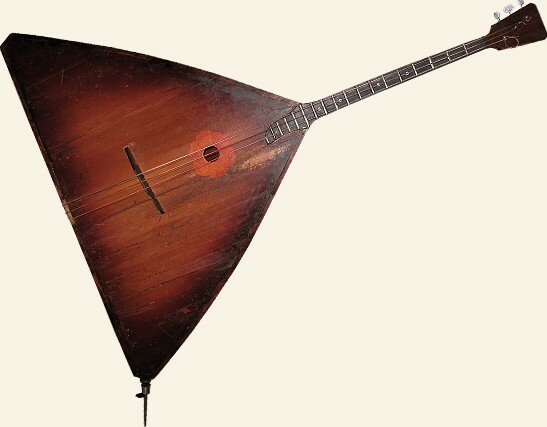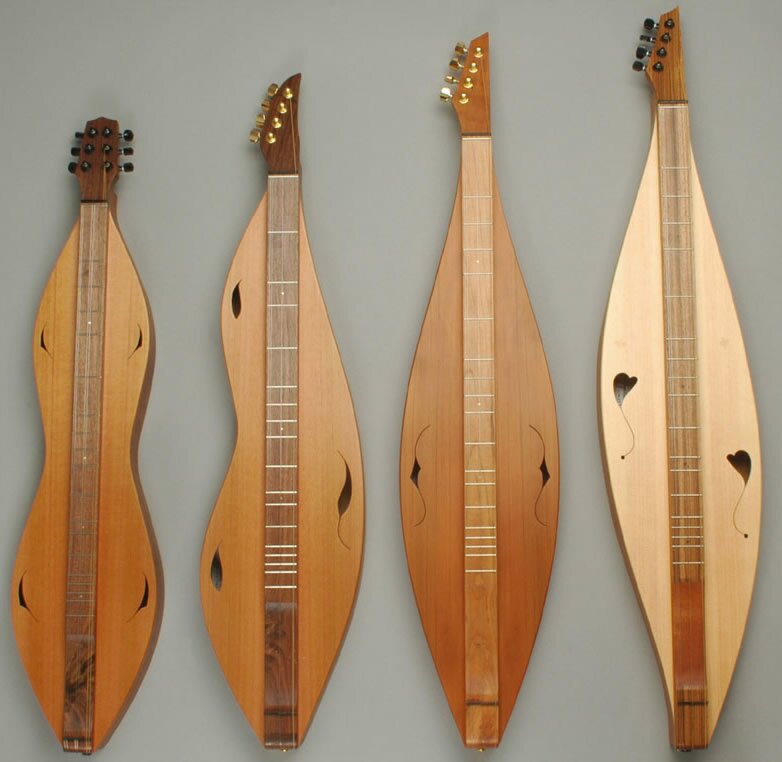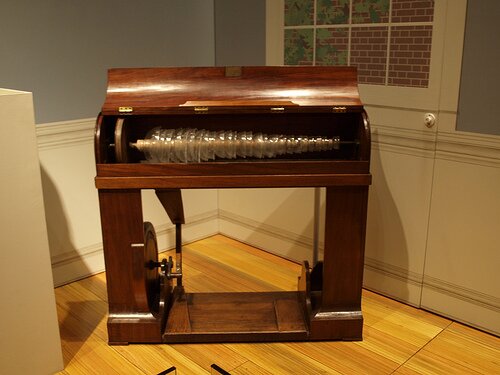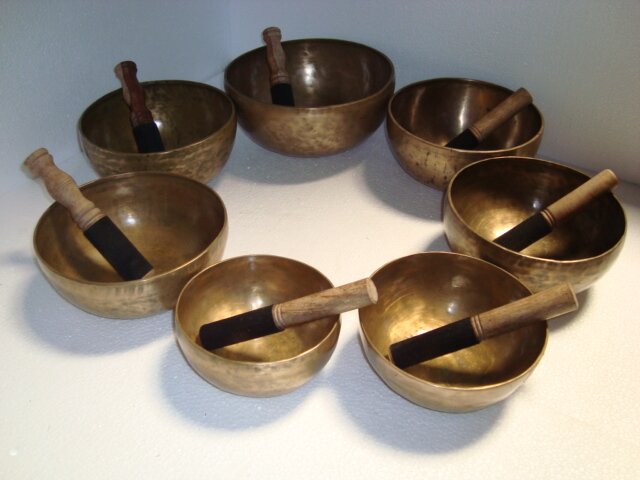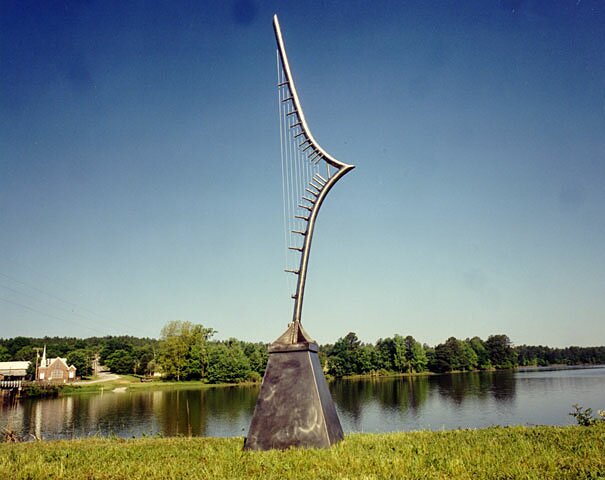Top 10 Little Known Musical Instruments
Suggested by SMSIn constructing a list of the Top Ten Little Known Musical Instruments there were some ground rules to consider and some apologies to be handed out in advance. For an instrument to be included it had to be a real instrument that was played reasonably widely within a culture or community. Aunt Mable’s Pocket Zither that looked surprisingly like a comb with every second tooth missing and a piece of cellophane didn’t count.
With this rule in mind, it would follow that the “Little Known” tag of an instrument listed may well offend people of the culture or community that use it regularly. This was never the intention and can only be countered by the explanation that every instrument listed is recognized as a valuable and wonderful component of a rich culture.
Beginning at the tenth Little Known Instrument and working to the most Little Known Instrument, the intention of this article is to promote discussion and perhaps raise the profile of some beautiful musical objects.
10. Balalika
Even though Paul McCartney encouraged the girls “Back In The U.S.S.R.” to let him hear their Balalaikas ringing out, the instrument itself has rarely achieved great significance. The fact that even McCartney suggested it should “ring” out, despite it being a string instrument would suggest that it really wasn’t terribly well known.
The Balalaika is an instrument with a triangular body and a neck similar to a guitar. The body forms a resonating box and is made traditionally from fir or spruce on the top, with a back made of maple.
Although there are different sizes and pitches of Balalaika, it generally has three strings that are played with the fingers, although on some occasions a plectrum can be employed. The piccolo is the smallest and highest pitch of the family which includes instruments through to the contrabass. The contrabass is over a meter wide at its greatest point and often will be fitted with legs so that it can be played comfortably on stage.
The Balalaika was first noted in documents in 1688 but, while referred to in order to suggest an understanding or appreciation of Russian and Ukrainian culture, it has never attained the recognition of its more mainstream string-cousins.
9. Serpent
If you’ve ever wondered what a tuba would look like if the bends all went the other way and, instead of coiling to the horn-like end, the instrument meandered from the mouthpiece to a less grandiose conclusion, then you were probably imaging a Serpent. Named for its remarkably serpentine shape, and maybe because it looks like a boa constrictor trying to asphyxiate the player, the Serpent is played with the same lip pattern and mouthpiece as a brass instrument.
But, although there have been brass Serpents made, traditionally they were made of wood and covered with leather or varnished cloth. This provided strength and stopped leaks. The crook connecting the mouthpiece to the body of the instrument was usually made of brass, the mouthpiece itself being made of wood or ivory.
The sound of the Serpent is described as mellow and rich when played softly and full-bodied when played with reasonable vigor. However, should a novice try to play it loudly, the noises have been described as not unlike a large animal in severe distress? Of its appearance it has been defined as “A type of clumsy and unsightly cornet” and as “A drain pipe suffering from intestinal disorder.”
Yet, there can be no doubt that its unique appearance and individual sound makes it a remarkable instrument, even if now it is largely lost to history.
8. Tabla
Although the Tabla is an instrument that has gained favor in a number musical areas, common knowledge of the Indian drum is still limited. Consisting of a pair of drums, the Tabla can create a wide variety of sounds and rhythms that are fascinating in their own right, as well as exciting within an ensemble.
The “dayan” is the drum that is placed on the right of the pair and it is smaller than its partner. It has a tapering solid wood body that is usually carved from a single piece of hardwood. The base is slightly larger than the top, which is covered with skin.
On the left is the “bayan” which is half sphere made of copper, bronze, brass or clay. It is also covered with skin and, using the heel of the hand to apply pressure or in a sliding motion, the pitch of the sound can be manipulated. Together the drums produce sounds that complement each other and can be used to create complex rhythms and beautifully blended music.
The Tabla came to prominence in the seventeenth and eighteenth centuries although there are indications that it existed in more primitive forms long before then. Sculptures of instruments of a similar nature date back thousands of years.
Unlike many percussion instruments, the Tabla has the capacity to be played as a solo instrument in its own right, but in most cases it is an accompaniment for other more classical instruments.
7. Dulcimer
A member of the zither family, the Appalachian Dulcimer is a stringed instrument with frets along a long neck. But unlike other stringed instruments, the neck does not protrude from the body; rather the body extends the length of the neck only leaving that part of the instrument that allows the string to be tightened projecting beyond.
Believed to be one of the few instruments to originate in America, the first recorded experiences of the Dulcimer were among Scottish and Irish settlers in the Southern Appalachian Mountains near the start of the 1800’s. But there is no historical connection between the Dulcimer and any instrument recognized in Scotland or Ireland, so the logical conclusion was that it was created after the immigrants had reached America.
The body of the Dulcimer holds particular interest. It has been described variously as being an hour glass shape or, perhaps more sensually, as in the shape of a woman’s body. Unlike its European namesake, the Appalachian Dulcimer was originally strummed with a quill, but in time variations included using a pick, bowing the strings, plucking with fingers or with a “noter”, a short piece of cylindrical wood.
Coming from the Latin for “sweet song” the name Dulcimer provides a good indication of the beauty of the music produced by the instrument. Even with only three or four strings, the variety of sounds able to be induced by variations in styles of playing make it a wonderful, if little known, instrument.
6. Didgeridoo
A primitive and yet beautiful instrument, the Didgeridoo is believed to be one of the oldest musical instruments in the world. It has been played by the indigenous people of Northern Australia’s Arnhem Land for thousands of years and the skill and creativity of the men who play it is astounding.
To successfully play the Didgeridoo, the performer must establish a process called circular breathing. This involves breathing in through the nose while using air stored in the cheeks to maintain the flow of air to the instrument. In this way the drone of the Didgeridoo remains constant.
Against the background of the rich and low-pitched sound, the player includes from nature. These are often amazing renditions of anything from the sounds of animals to the rumble of thunder or the flap of a bird’s wings. As such, the music of the Didgeridoo creates images of the landscape and the people who have lived in it for thousands of years.
A Didgeridoo is made, not through the craft of an artisan, but through the action of nature. Tree limbs and young tree trunks that have become the home and victims of termites are gradually hollowed out by the insects. These wooden cylinders are then cut to about 1.3 meters (four feet) in length and cleaned out with hot coals and a stick.
When referring to the men who play the Didgeridoo earlier in this passage, there was no politically insensitive comment being made towards the ability of women to play it. Probably as an indication of the ancient tradition of the Didgeridoo and its place within one of the oldest cultures in the world, the indigenous people of Australia still believe that only men are allowed to play the instrument. The negative effect of a woman doing so may not be immediately obvious, but there is no doubt that it is a sign of great disrespect to the traditional inhabitants of the land
5. Alphorn
A wind instrument originally used to send warning and other signals during military campaigns, the Alphorn is an enormously long and conical wooden horn. While it was mentioned as far back as the writings of Tacitus, the Roman historian who lived from 56 to 120 C.E., the Alphorn is believed to have been in existence for thousands of years before.
In addition to the long horn, there is a carved wooden mouthpiece, often shaped from hardwood into a cup form and played in a similar manner to modern brass instruments. With no valves or finger holes, the sound of the Alphorn is varied only by the player altering the tension in their lips. This does not seem to affect the versatility of the instrument as it still boasts a three octave range and devotees claim that the sound is more natural and pure than that of other instruments.
The horn itself is made of strips of Birchwood or spruce soaked in water. This makes them malleable and they are wound into a conical shape. The outside is then coated with bark and the bell is decorated ornately with carvings and paintings.
The pitch of Alphorns varies with regard to the length. An Alphorn of eleven feet and six inches (3.5 meters) produces a fundamental pitch of F sharp, at twelve feet and three inches (3.73 meters) a pitch of F and when thirteen feet and two inches (4 meters), the pitch is E.
Of a similar family to the Australian didgeridoo, the Alphorn is a simple, but wonderful instrument producing a mellow, but exceptionally loud sound.
4. Bombard
Originating from Breton, the Bombard is a deceptive double reed instrument that, at a distance, could be described as a member of the oboe family, but has also been claimed as part of the shawm group of instruments. Played with the reed held between the lips, the conical shape of the Bombard helps to create a sound that has been described anything from piercing to raucous.
Physically, the Bombard is about twelve inches (thirty centimeters) in length with the horn having a diameter of about three inches (seven to eight centimeters). However, for a reasonably small instrument, the volume of the Bombard is exceptional. So loud that some sources include the warning that it should only be played outdoors.
The Bombard has a history stretching back to medieval times and was played largely by the Waits. It was used for religious ceremonies, but also for festivals and entertainment. In parts of Europe it is still played for special occasions, but it has largely been superseded by the more socially polite oboe and clarinet.
3. Glass Armonica
Among the many wonderful contributions Benjamin Franklin made to science and his country, one of his favorites was the Glass Armonica. This curious instrument was an investigation into the musical properties of glass.
Many of us have discovered the tone produced by moving a moist finger around the rim of a wine glass. The tone is clear and in some ways hauntingly beautiful. Benjamin Franklin recognized this and designed a series of glass bowl-like pieces that were positioned in order of ascending tone along a cork-covered steel rod.
Then, with moist fingers, the performer work gently on each bowl to create a tone from each. With skill and practice, whole tunes can be performed and music can be written specifically for the Glass Armonica. When it was introduced to Mozart, he was so impressed that he wrote two pieces for the Glass Armonica or Glassychord, one was a solo piece, the other was for a quintet comprising flute, oboe, violin, cello and the Glass Armonica.
But as music was being to be performed in larger and the Glass Amonica was unable to be amplified, its usefulness quickly diminished and the instrument was consigned to the annals of history rather than the stages of world.
2. Singing Bowls
Perhaps one of the gentlest sounds of any instrument, a Singing Bowl is played by moving a wooden mallet around the inside of the bowl so that the rim and sides vibrate. The principle is similar to that used to create a tone by rubbing the rim of a wine glass with a moist finger. But the sound that emits from a singing bowl is usually a combination of three harmonics. The first provides the fundamental frequency and the others complementary harmonics.
A singing bowl rests of a small cushion and is used as a focus for meditation and relaxation. Having originated in Asia, they are sometimes referred to as Tibetan Singing Bowls, but the use of them to enhance health and personal wellbeing has also earned them the name of healing bowls. The therapeutic nature of the sound has led to the healing bowls being used by a range of therapists including stress and cancer specialists.
Historians have traced the concept of the singing bowls back three thousand years; they have also been discovered along the Silk Road, yet while attributed to Tibet, there are none found there today. Whether the meditative sound of the singing bowls led people to associate them with the spiritual essence of Tibet or if they have been lost to the country through political oppression, the unassuming brass bowls remain a special, if little known musical instrument.
1. Aeolian Wind Harp
Named after Aeolus, the Greek God of the wind, the Aeolian Wind Harp is a creation of beauty and ingenuity. Original found in ancient times, the Aeolian Wind Harp was first described in 1673 by Athanasius Kircher. Following this endorsement it quickly became popular in the Romantic Era and was a common item in many households.
The Aeolian Wind Harp is effectively a wooden box with a sounding board. Strings of different materials, thickness or lengths are stretched across two bridges and the harp is positioned so that the wind can blow across the strings. This produces sound of a gentle, peaceful nature.
The sound produced is higher than the note that would be gained by plucking the string. In fact, it is a harmonic of the fundamental note. Varying with the strength of the wind, the strings can produce sounds from a loud howl to a gentle almost inaudible hum. With the strings tuned to a variety of pitches, a single tone or even a chord can be heard.
While Aeolian Harps are still made by gifted craftsmen, they are mostly seen now as monuments or works of art. In many cases, their status as a musical instrument is barely recognized.
